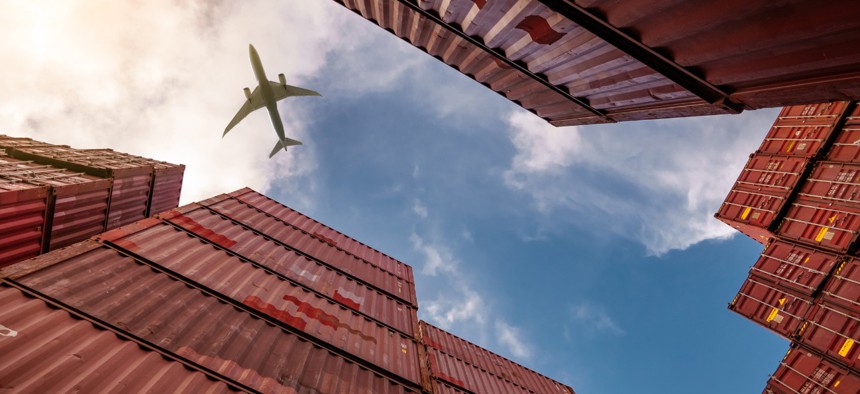
fahroni / istock
How to Reduce the Carbon Impact and Risk in Supply Chains
Five steps public sector leaders can take now.
For many organizations, it took a pandemic to reveal just how dependent societies are on global supply chains. As the coronavirus began to spread globally in early 2020, a series of regional, national, and local restrictions were implemented to control the outbreak, which, in many cases, unexpectedly slowed or stopped the movement of essential materials.
More than a year later, organizations are more keenly aware of the critical role their supply chains play in the resilience of their business. They also have a deeper understanding of their global environmental footprint. This focus on supply chain effectiveness, efficiency and sustainability, coupled with the Biden administration’s commitment to building more secure, climate-conscious supply chains, is driving agencies to more proactively manage their supply chains for risk and resilience.
Private Sector Parallels and New Risks
In the private sector, supply chain risk management became a priority 20 years ago through a rising awareness that, while globalization could deliver impressive cost savings, it could also create new risks of failure, labor controversies, and beyond. Many organizations began mapping their supply chain beyond the first tier to ensure they knew where items came from and what the risks were. Today, this practice remains essential to private and public sector organizations for guarding against more traditional vulnerabilities, but also for understanding the evolving climate considerations that carry new types of risks.
For many organizations, supply chains account for over 80% of their carbon footprint. When combined with an increase in climate-related weather events, like severe storms, flooding, and wildfires—some of which have been occurring simultaneously in different geographies—the potential for disruption, additional environmental impacts, and societal consequences is severe. Organizations must know the depth of their supply chains and supply chain networks to understand their true climate impact and the associated risks.
By becoming familiar with all tiers of their supply chains, organizations can gain insight into their emissions, build investment plans, influence suppliers to take more sustainable approaches, and monitor progress. They can also assess the areas where their climate impact is the most severe and which suppliers carry the largest greenhouse gas impact or the lowest climate maturity. Further, when supply chain disruptions do arise, organizations that understand who provides what from where within their extended supply chains will have time to adjust and pivot to an alternate approach.
What Public Sector Leaders Can Do
To better understand climate-related vulnerabilities, public sector organizations should consider:
- Performing a supply chain illumination and risk analysis: Mapping supply chains beyond the first tier (and as far down as possible) for products that are mission critical or purchased in large volumes allows for an integrated assessment and management of national security, climate and other risks to the supply chain.
- Measuring your supply chain’s greenhouse gas footprint: Conducting a Scope 3 footprinting exercise to understand emissions resulting from supply chains can be an important first step to understand greenhouse gas impacts.
- Performing a climate risk assessment: Combining supply chain data with climate change physical risk data and highlighting the parts of the supply chain most likely to be impacted by fires, floods, storms and other extreme weather events can also reveal vulnerabilities.
- Conducting a climate hotspot analysis: Mapping the climate impact of particular suppliers and spend categories can identify the largest climate impacts, as well as the relative climate maturity of those suppliers. That information can identify the biggest vulnerability to climate regulation (e.g., costs from carbon pricing or non-compliance with new mandates) within the supply chain and the greatest opportunity to influence the outcome.
- Driving supply chain climate engagement and progress: Meeting and preparing for decarbonization mandates should include engaging with suppliers on sustainable procurement practices to improve the climate impacts of the supply chain and actively manage risks and pricing.
The Benefits of a Sustainable Supply Chain
For public sector leaders, understanding how to include the carbon impact in sourcing decisions can help meet ambitious climate reduction targets and set the example of what a secure and climate-conscious supply chain looks like. Organizations with a clear picture of their supply chain risks will be well-positioned to prepare for new regulations and requirements (climate-related and otherwise), will be able to guard against disruption and will advance transparency and sustainable supply chain risk management.
Britt Harter is a partner and Alex Henry a director at Guidehouse, a management consulting firm.






